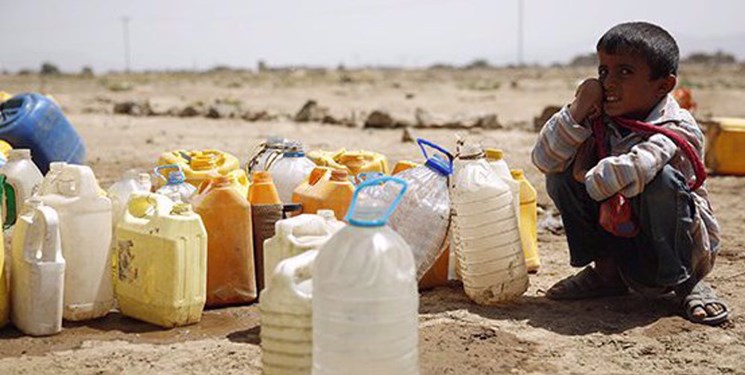Report: Millions Threatened by Water, Food Shortages in Yemen
YemenExtra
More than half a decade of conflict exhausted Yemenis and transformed the country into the world’s largest humanitarian crisis. Access to water, food and basic services is becoming harder for most Yemenis even as funding for humanitarian operations has fallen sharply.
In one of the most water-scarce countries in the world, Yemen’s water crisis affects millions of people a day. The nation’s network of water pipes reaches only 30% of the population and is damaged or in need of upgrading in many places. More than 15 million people resort to expensive and time-consuming ways to find enough water every day, ICRC Newsroom reported.
“There is no clean water here or any functional water projects. To get drinking water we have to wait for hours outside until water trucks come,” said Om Yahya, a mother of four living in the outskirts of Sana’a, who spoke to the ICRC while she was at the water point where people gather to wait for trucks.
She often waits for several hours to fill a couple of water jerrycans that will barely cover her family’s needs for the day.
Millions of Yemenis often walk for miles to fetch water, exposing themselves to different risks, including the risk of assault.
“Our children have to walk long distances daily to get water without proper transportation which forces many among them to stop their education. They are also exposed to accidents because many must use donkeys to transport water. Because of that many children from the area are suffering from permanent disabilities,” said Hassan, a resident of Medi district of Hajjah Governorate.
In many areas, people are forced to use agricultural water for drinking, cooking and washing. Using water meant for agricultural purposes can generate serious health issues for the population.
A lack of access to potable water and little treatment of wastewater contributes to major health outbreaks, including cholera and acute watery diarrhea that started in October 2016 in a country where almost 20 million people lack access to basic health care.
The severity of acute food insecurity continues to worsen as the conflict prolongs. Most Yemenis survive on one meal per day and child malnutrition is increasing. The food security situation was aggravated by escalating conflict, the COVID-19 pandemic, flooding, a desert locust outbreak, economic collapse, and reduced humanitarian aid.
“My family relies on charity to eat. Food baskets are our only way to satisfy basic food needs. But most organizations stopped food support, so we mostly rely on community solidarity to help each other,” said Ali, a 45-year-old father of three, who is living in a temporary situation in Ta’izz and is unable to find a job because he is considered too old to work.
Although 24 million people out of a population of 30 million need some form of humanitarian assistance, funding for Yemen are decreasing drastically. Yemen’s latest international pledging conference earlier this year only reached 50% of the funding goal.
“It’s important that the world does not forget about the plight of the population suffering from the war and violence,” said Peter Maurer, the President of the ICRC. The worst-case scenario for Yemenis is that as the situation worsens, the world’s attention wanes.
The decrease in funding has a direct impact on people’s lives and our ability to sustainably provide life-saving aid to them and to reinforce fragile essential infrastructure in the way we need to, said Maurer.
Fars

